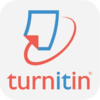CHARACTERISTICS OF URINARY TRACT STONE PATIENTS AT Dr. H. CHASAN BOESOIRIE TERNATE REGIONAL GENERAL HOSPITAL 2021-2023
DOI:
https://doi.org/10.24269/ijhs.v9i1.11300Abstract
Urinary tract stones (UTC) are the occurrence of stones in the urinary tract organs. Environmental factors such as daily behavior, excess body weight, eating habits, and lack of fluid intake influence the occurrence of UTC. Hormonal, genetic, and anatomical factors can also play a role in its pathogenesis. The purpose of this study was to determine the characteristics of urinary tract stone patients at Dr. H. Chasan Boesoirie Ternate Regional Hospital. This type of research is descriptive research with a cross-sectional approach research design. The data used are secondary data in the form of medical records of UTC patients in 2021-2023. This study obtained a total sample of 171 people, the distribution of patients was mostly male (67.8%), adult age group (≥19-<45 years) (39.2%), normal body mass index (BMI) (49.1%), high school education (58.5%), and civil servant/military/police/state-owned enterprises/regional-owned enterprises occupation (21.1%). Men are at higher risk of experiencing UTC, allegedly due to the role of hormones. Workload, sweat, and lack of fluids that are common in productive age are risk factors for BSK. Obesity triggers urinary tract stones through increased uric acid, decreased urine pH, inflammation, and oxidative stress. Education level can affect the risk of BSK. Work can be a risk for BSK due to sun exposure to poor lifestyle
References
[2] T. Yasui et al., ‘Pathophysiologyâ€based treatment of urolithiasis’, International Journal of Urology, vol. 24, no. 1, pp. 32–38, Jan. 2017, doi: 10.1111/iju.13187.
[3] M. K. Silalahi, ‘Faktor-faktor yang berhubungan dengan kejadian penyakit batu saluran kemih pada di poli urologi RSAU dr. Esnawan Antariksa’, Jurnal Ilmiah Kesehatan, vol. 12, no. 2, pp. 205–212, Sep. 2020, doi: 10.37012/jik.v12i2.385.
[4] Y. Liu et al., ‘Epidemiology of urolithiasis in Asia’, Oct. 01, 2018, Editorial Office of Asian Journal of Urology. doi: 10.1016/j.ajur.2018.08.007.
[5] G. Ratu and A. Badji, ‘Profil analisis batu saluran kemih di laboratorium patologi klinik’, Indonesian Journal of Clinical Pathology and Medical Laboratory, vol. 12, no. 3, 2018, doi: 10.24293/ijcpml.v12i3.870.
[6] J. Z. Xu et al., ‘Sex disparities and the risk of urolithiasis: a large cross-sectional study’, Ann Med, vol. 54, no. 1, pp. 1627–1635, 2022, doi: 10.1080/07853890.2022.2085882.
[7] C. Boutari and C. S. Mantzoros, ‘A 2022 update on the epidemiology of obesity and a call to action: as its twin COVID-19 pandemic appears to be receding, the obesity and dysmetabolism pandemic continues to rage on’, Metabolism, vol. 133, p. 155217, Aug. 2022, doi: 10.1016/j.metabol.2022.155217.
[8] P. Simanullang, ‘Karakteristik pasien batu saluran kemih di Rumah Sakit Martha Friska Pulo Brayan Tahun 2015 s/d 2017’, Jurnal Darma Agung, vol. XXVII, no. 1, pp. 807–813, 2019, doi: http://dx.doi.org/10.46930/ojsuda.v27i1.136.
[9] Shintya, S. N. Irasanti, and D. S. Rosady, ‘Desciption the characteristic and number of events of urinary stones at Al-Islam Hospital periode January to December 2017’, Prosiding Pendidikan Dokter, 2019.
[10] T. R. McClintock et al., ‘Testosterone replacement therapy is associated with an increased risk of urolithiasis’, World J Urol, vol. 37, no. 12, pp. 2737–2746, Dec. 2019, doi: 10.1007/s00345-019-02726-6.
[11] Y. Peng et al., ‘Testosterone induces renal tubular epithelial cell death through the HIF-1α/BNIP3 pathway’, J Transl Med, vol. 17, no. 1, p. 62, Dec. 2019, doi: 10.1186/s12967-019-1821-7.
[12] C. Changtong, P. Peerapen, S. Khamchun, K. Fong-ngern, S. Chutipongtanate, and V. Thongboonkerd, ‘In vitro evidence of the promoting effect of testosterone in kidney stone disease: A proteomics approach and functional validation’, J Proteomics, vol. 144, pp. 11–22, Jul. 2016, doi: 10.1016/J.JPROT.2016.05.028.
[13] M. Tarhuni et al., ‘Estrogen’s Tissue-Specific Regulation of the SLC26A6 Anion Transporter Reveal a Phenotype of Kidney Stone Disease in Estrogen-Deficient Females: A Systematic Review’, Cureus, Sep. 2023, doi: 10.7759/cureus.45839.
[14] P. Thakore and T. H. Liang, Urolithiasis. StatPearls Publishing, 2024. Accessed: Jan. 07, 2024. [Online]. Available: http://www.ncbi.nlm.nih.gov/pubmed/22498635
[15] Y. Wang, Y. Zhu, W. Luo, Q. Long, Y. Fu, and X. Chen, ‘Analysis of components and related risk factors of urinary stones: a retrospective study of 1055 patients in southern China’, Sci Rep, vol. 14, no. 1, p. 28357, Nov. 2024, doi: 10.1038/s41598-024-80147-1.
[16] Y. A. Ghopican, E. Purnanto, N. Triswanti, and T. Prasetia, ‘Faktor-faktor yang berhubungan dengan kejadian nephrolithiasis di ruang rawat inap bedah RSUD Dr. H. Abdul Moeloek Provinsi Lampung’, Jurnal Ilmu Kedokteran dan Kesehatan, vol. 10, no. 6, pp. 2171–2176, Jul. 2023, doi: 10.33024/jikk.v10i6.10428.
[17] D. Aune, Y. Mahamat-Saleh, T. Norat, and E. Riboli, ‘Body fatness, diabetes, physical activity and risk of kidney stones: a systematic review and meta-analysis of cohort studies’, Nov. 01, 2018, Springer Netherlands. doi: 10.1007/s10654-018-0426-4.
[18] W. Poore, C. J. Boyd, N. P. Singh, K. Wood, B. Gower, and D. G. Assimos, ‘Obesity and Its impact on kidney stone formation’, Rev Urol, vol. 22, no. 1, pp. 17–23, 2020.
[19] A. W. Partin, R. R. Dmochowski, L. R. Kavoussi, C. A. Peters, and A. J. Wein, Campbell Walsh Wein Urology, 12th ed. Philadelphia: Elsevier, 2020.
[20] S. Amira and S. Kemala Sari, ‘The characteristics of kidney stone patients and their management at Dr. Pirngadi Medan General Hospital in 2016’, Jurnal Sehat Indonesia (JUSINDO), vol. 6, no. 01, pp. 234–241, Dec. 2023, doi: 10.59141/jsi.v6i01.78.
[21] W. A. C. Ningrum, H. Titiek, and Rahmah, ‘Kualitas hidup pasien urolithiasis pada komponen fisik dan komponen mental dengan instrumen Short Form-36 (SF-36)’, Jurnal Care, vol. 4, no. 3, 2016.
[22] E. Hadibrata, Suharmanto, and M. F. Wardhana, ‘Hubungan riwayat hipertensi dengan kejadian batu ginjal’, JK Unila, vol. 5, no. 2, 2021, doi: https://doi.org/10.23960/jkunila52%25p.
[23] D. A. Malieckal and D. S. Goldfarb, ‘Occupational Kidney Stones’, Curr Opin Nephrol Hypertens, vol. 29, no. 2, pp. 232–236, Mar. 2020, doi: 10.1097/MNH.0000000000000581.
[24] E. Hadibrata and Suharmanto, ‘Pekerjaan dan pola istirahat berhubungan dengan kejadian batu ginjal’, Jurnal Penelitian Perawat Profesional, vol. 4, no. 3, pp. 1017–1024, 2022, doi: 10.37287/jppp.v4i3.1074.
[25] V. Venugopal et al., ‘Risk of kidney stone among workers exposed to high occupational heat stress - A case study from southern Indian steel industry’, Science of The Total Environment, vol. 722, p. 137619, Jun. 2020, doi: 10.1016/j.scitotenv.2020.137619.
[26] Y. Zhang et al., ‘The impact of ambient temperature on the incidence of urolithiasis: A systematic review and meta-analysis’, 2020, Nordic Association of Occupational Safety and Health. doi: 10.5271/sjweh.3866.
[27] Y. Li, X. Di, M. Liu, J. Wei, T. Li, and B. Liao, ‘Association between daily sitting time and kidney stones based on the National Health and Nutrition Examination Survey (NHANES) 2007-2016: a cross-sectional study’, Int J Surg, vol. 110, no. 8, pp. 4624–4632, Aug. 2024, doi: 10.1097/JS9.0000000000001560
Downloads
Additional Files
Published
Issue
Section
License

This work is licensed under a Creative Commons Attribution-ShareAlike 4.0 International License.











